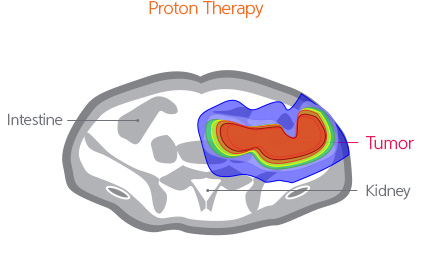
Yu, Jeong Il
Radiation Oncology "Instructor, Department of Radiation Oncology, Sungkyunkwan University School of Medicine, Samsung Medical Center" Special Interests : 대장암, 췌장암, 담도암, 간암, 위암, 육종, 특수방사선치료, 양성자치료

We would like to introduce the details of proton therapy for sarcoma cancer.
This treatment can be preferentially considered in the case of pediatric sarcoma, head and neck sarcoma, as well as retroperitoneal sarcoma. Also, in the case of extremities sarcoma, it can be helpful if surgical operation cannot be applied or the sarcoma is resected incompletely.
In the case of sarcoma, a relatively higher radiation dose is required in order to attain the radiation effect. If the proton treatment is implemented, a higher radiation dose can be transferred to lower the recurrence without increasing the probability of side effects from the peripheral normal organs.
For children, the side effects caused by the radiation are more severe compared to adults. Therefore, proton treatment will be helpful in this case. For adult patients, the head, neck and retroperitoneal areas can have a very limited radiation dose due to the distribution of major organs around these areas. In this case, the proton treatment can transfer a relatively higher radiation dose while preventing the increase of the side effects which may occur in the important organs of the facial area (including eyes, ears, and brain) and abdominal areas (stomach, duodenum, intestine tenue, liver, and kidneys).


In the case of high dose radiation proton treatment, it has been reported that a lower recurrence rate can be recorded and that it maintains a lower occurrence rate of side effect when maintaining a similar radiation dose.
In the case of pediatric sarcoma, it is reported that proton treatment can maintain a similar efficacy compared to the existing X-ray treatments and decrease the acute or sub-acute side effects, as well as decreasing the secondary cancer occurrence rate.
Particularly, this treatment can safely transfer a high radiation dose to the retroperitoneal sarcoma, well-known for a 50% or more recurrence rate to be expected within 5 years due to the insufficient radiation transfer, and it is reported that the tumor control rate for 5 years is more than 90%.